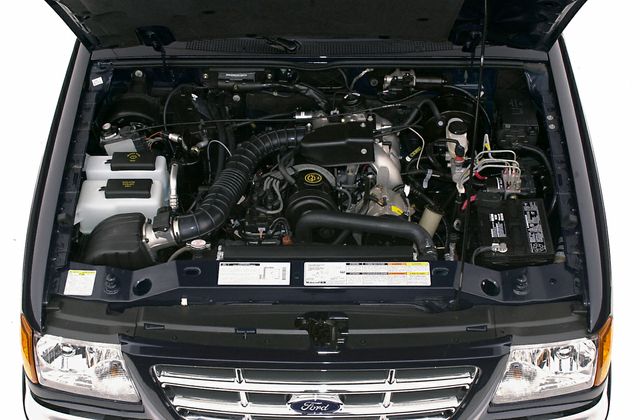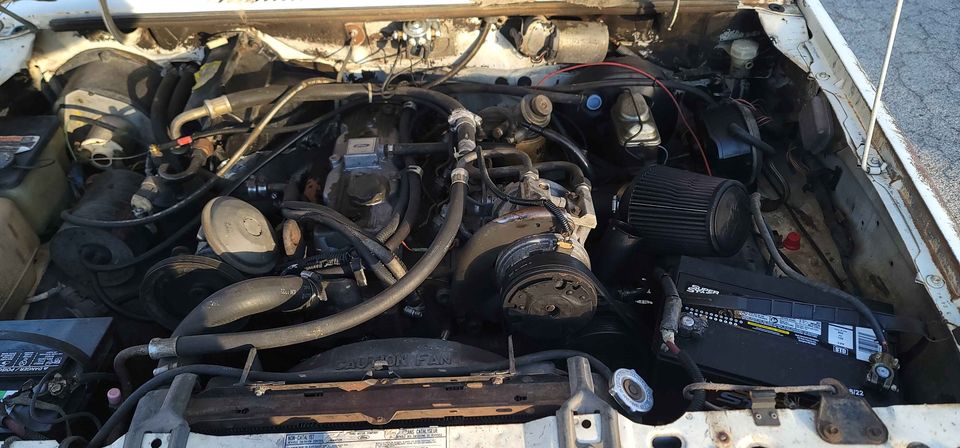How the 2.2 Ford Ranger Engine Stands Out for Durability and Power in Tough Conditions
How the 2.2 Ford Ranger Engine Stands Out for Durability and Power in Tough Conditions
Blog Article
Recognizing the Fundamentals of Car Engines: Types, Functions, and Features

Introduction of Auto Engines
A car engine functions as the heart of a vehicle, converting fuel into mechanical power to drive it ahead. This complex system makes up numerous parts that operate in unison to make sure optimum efficiency and efficiency. The essential operation of a vehicle engine includes the interior combustion process, where fuel and air are combined, sparked, and expelled to develop power.
The engine's layout can substantially influence its performance, fuel effectiveness, and emissions. Key parts include the cyndrical tube block, pistons, crankshaft, and camshaft, each playing a vital function in the engine's overall function.
In enhancement to these parts, engines usually utilize different systems such as gas shot, ignition, and cooling down systems to enhance performance and long life. Recognizing the fundamental mechanics of auto engines is vital for doing and identifying concerns maintenance, ultimately contributing to the lorry's dependability and effectiveness gradually.

Sorts Of Cars And Truck Engines
Cars and truck engines can be categorized into several kinds based upon their design, gas type, and functional principles. 2.2 ford ranger engine. The most common classifications include internal burning engines (ICE), electric engines, and hybrid engines
Internal combustion engines, which can be additional separated into fuel and diesel engines, run by stiring up a fuel-air blend to produce power. Fuel engines are commonly lighter and smoother, while diesel motor are a lot more fuel-efficient and offer higher torque.
Electric engines use electrical power kept in batteries to power an electric motor, supplying instant torque and zero emissions throughout operation. As technology advancements, electric cars (EVs) are increasingly ending up being popular for their ecological advantages and reduced running prices.
Hybrid engines incorporate elements of both inner burning and electric engines, allowing for versatile source of power and enhanced fuel effectiveness. They can run in numerous settings, using either the gasoline engine, the electrical motor, or both simultaneously.
Each kind of engine has distinctive advantages and negative aspects, influencing their application in different automobile types and market segments, from portable cars and trucks to durable vehicles. Understanding these kinds is essential for making notified choices regarding vehicle selection and efficiency assumptions.
Engine Functions Explained
Understanding engine features is important for realizing exactly how cars run effectively. At the core of any type of interior combustion engine exists the fundamental procedure of transforming fuel into mechanical energy.
The ignition occurs following, sparking the mix and creating a quick expansion of gases. This force drives the piston down throughout the power stroke, which eventually translates right into the rotational motion of the crankshaft. The exhaust stroke then gets rid of the spent gases from the chamber, giving way for a new cycle to commence.
Along with these main functions, engines additionally include systems that take care of cooling and lubrication, making sure ideal operational temperature levels and reducing rubbing in between moving components. This detailed interaction of features enables the engine to generate the power essential for vehicle propulsion while maintaining performance and integrity. Recognizing these features gives beneficial understanding into the intricacies of vehicle design and enhances the capability to detect and resolve engine-related problems efficiently.
Trick Engine Functions
Engine design incorporates a number of key functions that significantly affect performance, performance, and toughness. One of one of the most vital facets is the engine configuration, that includes inline, official site V-type, and level layouts. Each arrangement influences the engine's dimension, power, and balance outcome, thereby impacting total lorry characteristics.
Another necessary function is the engine variation, describing the complete volume of all cylinders. Larger displacements normally produce more power yet may jeopardize gas performance. Engine products additionally play a crucial duty; high-strength and light-weight products, such as light weight aluminum and magnesium alloys, enhance performance without including too much weight.
The sort of fuel injection system utilized-- such as straight or multi-port shot-- impacts combustion performance and emissions. Turbocharging and turbo charging are attributes that boost engine efficiency forcibly additional air right into the combustion chamber, raising power output without substantially enhancing engine dimension.
Lastly, the visibility of advanced engine monitoring systems maximizes fuel-air mix and ignition timing, adding to smoother operation and much better fuel economy. Collectively, these functions define an engine's capabilities, establishing the foundation for its performance and longevity in an affordable auto landscape.
Maintenance Tips for Engines
Proper engine upkeep is vital for ensuring ideal efficiency and long life, as ignoring regular treatment can lead to considerable issues down the line. To preserve your engine properly, begin with regular oil changes, normally every 3,000 to 7,500 miles, depending on the type of oil made use of. Fresh oil lubricates engine parts, reducing friction and wear.
Additionally, keeping track find out here now of coolant levels is crucial to stop overheating. Make sure that the coolant is topped up and remains in excellent condition to maintain efficient temperature level regulation. Consistently replace and inspect air and fuel filters, as blocked filters can hinder air movement and fuel distribution, endangering engine performance.
Furthermore, take notice of ignition system and ignition systems. Defective or worn ignition system can cause misfiring and decreased efficiency. Checking the battery terminals and connections for rust is likewise vital, as a weak battery can influence engine beginning.

Final Thought
In summary, a thorough understanding of car engines incorporates various types, functions, and crucial functions that significantly influence car efficiency. Interior burning engines, together with electric and hybrid choices, demonstrate varied mechanisms for blog here power conversion. 2.2 ford ranger engine. Acknowledging the essential features, such as intake and exhaust cycles, together with vital engine features like configuration and fuel injection systems, gears up cars and truck owners with the knowledge needed for reliable upkeep and procedure, eventually improving lorry longevity and efficiency
A vehicle engine serves as the heart of a vehicle, transforming gas right into mechanical power to drive it forward. The basic operation of an automobile engine involves the inner combustion process, wherein gas and air are blended, ignited, and expelled to develop power.
Routinely examine and change air and gas filters, as clogged up filters can hinder air movement and gas distribution, jeopardizing engine efficiency. - 2.2 ford ranger engine
In recap, a comprehensive understanding of cars and truck engines encompasses numerous kinds, functions, and crucial features that considerably affect car performance. Recognizing the important functions, such as intake and exhaust cycles, alongside crucial engine functions like setup and fuel injection systems, gears up vehicle proprietors with the knowledge necessary for efficient upkeep and procedure, eventually improving vehicle longevity and performance.
Report this page